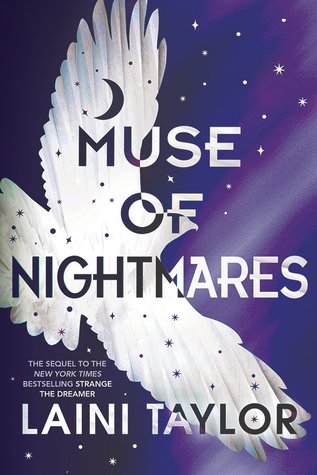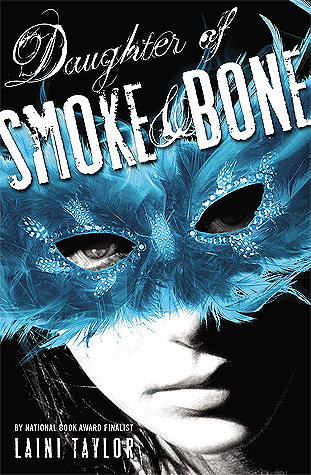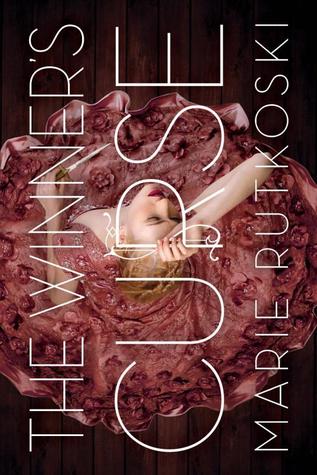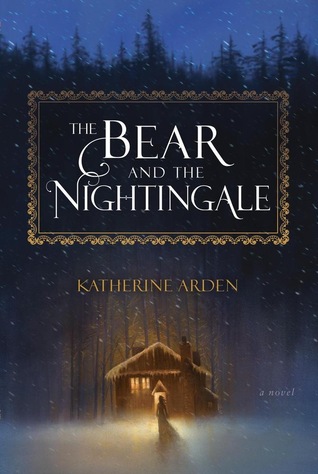YA fantasy author and Goodreads Choice Awards finalist Laini Taylor is an expert at creating lush worlds, rich characters, and the heartbreaking circumstances that keep her young lovers apart. Here Taylor talks to Goodreads about the allure of forbidden love and its significance for YA books, plus answers some of our questions about her eagerly awaited release of Muse of Nightmares.
What is it about forbidden lovers? Why are their stories so delicious, and why do I keep writing them? You might think I’d know, but my fascinations rise up from my subconscious while I’m fixated on story and character, and I often don’t even recognize them until later—usually when someone else points them out (and then I pretend like I knew all along). But I’m going to figure it out right here, right now. Let’s do this.
The term “star-crossed” comes from the prologue of Romeo and Juliet—everybody’s favorite secret child marriage slash double suicide—and refers to the idea that fates are determined by the position of the stars, e.g. factors beyond the lovers’ control. I have some issues with the "romance" of Romeo and Juliet, but the trope is undeniably powerful. It boils down to this: forbidden love between two people on opposite sides of a divide.
The idea of a connection so irresistible that you’ll defy everything to be together? It’s the ultimate swoon. Part of what I find so alluring about it is the idea of seeing someone, really seeing them and being seen in return, cuts through layers of bigotry, hatred, and social conditioning. Because with forbidden love, we’re usually talking about people who’ve been raised to hate, fear, or scorn each other as an enemy. And the notion that it’s possible to unlearn all that and see through it? It’s big.
In Romeo and Juliet, the divide was feuding families, but it might be war, social class, religion, race, proscriptive sexual mores, or any number of other things. There’s huge breadth for a writer in setting up that divide, and huge depth too, because the things that divide us are at the molten core of human experience and are endlessly rich. Not just with storytelling potential, but with scope for exploring elemental human themes like oppression, otherness, identity, and justice, to name just a few.
Forbidden love doesn’t just tap into our headiest romantic feelings. It’s also the perfect springboard for a compelling, high-stakes deep dive into the quagmire of human conflict, asking the question of whether closed minds can be opened, cultures changed, and hate unlearned.
With kissing.
Obstacles are a key element of all romance stories. What’s keeping the lovers apart? It has to be significant enough to shape a whole plot and it’s make or break for me as a reader. Nothing’s more propulsive than well-executed romantic conflict, when you’re breathless and aching right along with the characters to get to the part where they can finally, well, you know…
Be happy. Where they can finally be happy. Why, what were you thinking?
And there are a lot of obstacles to choose from. You can find whole lists of them online, running the gamut from "fear of commitment" to "doppelgänger." I wrote a story once where immortal lovers are kept apart by the fact that her soul is incubating inside a human girl and he has to wait for it to hatch, and another one where the girl accidentally kills the boy with her voice (oops) and has to fetch him out of hell, so I could add “soul incubation” and “fetch boy from hell” to the list of obstacles. But forbidden love is my favorite. The obstacle is built in. It’s ironclad.
Karou and Akiva. Lazlo and Sarai. They’re my forbidden lovers. Their obstacles are different and include death, war, evil gods, a creepy little girl, and more death. But at the end of the day, I can see that I was using both situations to explore questions about hate, cycles of violence, and hope. Especially hope, because here’s the thing: Lovers gonna love, and that goes for forbidden lovers too.
Quietly or boldly, on tiptoes or dragonback, they’re going to cross whatever barrier divides them, and when they do, it becomes…less divide-y. By seeing each other, they teach others to see. By turning passion into defiance, by daring to imagine a new way of living, they set something in motion that might eventually destroy the barrier. At least, that’s how I like to imagine it: impetuous youth remaking the world in the name of love.
____
Goodreads: So many readers are excited about Muse of Nightmares! We know you can’t reveal too much, but what can fans expect before reading the book?
Laini Taylor: Ah, thank you! I’m so excited for it to be read. I will give a couple of hints. While you don’t have to have read the Daughter of Smoke & Bone trilogy, if you have, you will see and understand things you will otherwise miss. There are also new characters introduced, namely two sisters named Kora and Nova whose paths will crash into the story in a spectacular way.
GR: Let’s talk about Lazlo and Sarai. What struggles are they currently facing in the sequel?
LT: We pick up right where Strange the Dreamer left off, with both Lazlo and Sarai changed but with no time to come to terms with their new selves because of Minya. In fact, Minya is the dark heart of the story and gets at the question of whether cycles of violence and vengeance can be broken. That’s what faces Lazlo and Sarai: the impossible task of persuading a traumatized child to break the cycle. I won’t tell you whether they succeed; I’ll just say, it was one of the most challenging things I’ve ever tried to do, narratively speaking.
GR: Tell us about their relationship. What odds are stacked against them?
LT: I think all of us have had the experience (especially in recent years) of arguing with someone who is unmoved by reason, whose mind is so fixed that there’s no hope of changing it. It’s not just maddening, it’s terrifying, especially when that person is in a position of power. So that’s what Sarai and Lazlo are up against: a mind that cannot be changed and an antagonist they cannot kill. What do they do? Read the book and find out!
GR: What do you enjoy most about writing their relationship?
LT: They’re so dreamy. Literally, of course, but not just literally. In spite of their circumstances, they’re so sweet and bashful and playful, and the unusual nature of their connection makes for such fun, dreamy set pieces. I was in heaven writing them. Where would you go on your first date if the only limit was your imagination? If you could rearrange the walls around you into anything, what would you make? Plus, they can share sensation—not just visions, but taste, smell, and feeling. Have you ever wondered what physical sensation is like for another person? They can share that with each other. It’s hot.
GR: You’ve been described as an expert on forbidden love stories. What would you say are the main ingredients of a compelling impossible love story?
LT: A compelling conflict, first of all. Impossible love needs an impossible barrier. I love setting up these situations, but inevitably in the middle I’ll fear that it actually is impossible and that I can’t come up with a solution for my characters! But when you’re in charge of a fictional universe, there’s always a way. You just have to stretch your imagination until you find it.
Besides your conflict, you need characters the reader will root for, and a plot that gives you opportunities to tantalize them with each other, along with reasons to deny them and keep them apart. It’s a dance, and you’re the choreographer, set designer, casting director, and everything else. It’s so fun.
GR: What do you think are some common misconceptions about impossible love stories? Do you see this changing in YA?
LT: Hmm. Maybe insta-love is associated with forbidden love? Romeo and Juliet are certainly the poster children for it. I mean, at the start of the play, Romeo was passionately in love with Juliet’s cousin. But there are ways to forge connections between lovers, and the books I recommend below all find great ways to do it!
GR: Why do you think YA readers need to see relationships like this?
LT: Forbidden love stories often deal with bigotry, ingrained hatred, and preconceived ideas about others, and more importantly, with having the courage to defy and overturn those things. It’s a good framework to get young readers to question their own assumptions and believe that sweeping cultural change is possible.
GR: What books do you think are great examples of forbidden love?
LT: Here are some of my favorite YA forbidden love reads. Some of the obstacles they add to the romantic conflict lists are slavery; rival circus clans; one of you is the god of death; one of you is a bounty hunter from hell; one of you is a cyborg; and damn, she cut off his hand. Oh! And I just realized that one of the conflicts is actually doppelgänger! Read them all!
Check out more recent blogs:
Discover These Hot New YA Series
Our Readers' Favorite YA Books of the Last Decade
The Ultimate Fall Reading List for YA Book Fans
posted by Marie on October, 05
from Goodreads Blog https://ift.tt/2CwfFTz
via IFTTT












No comments:
Post a Comment